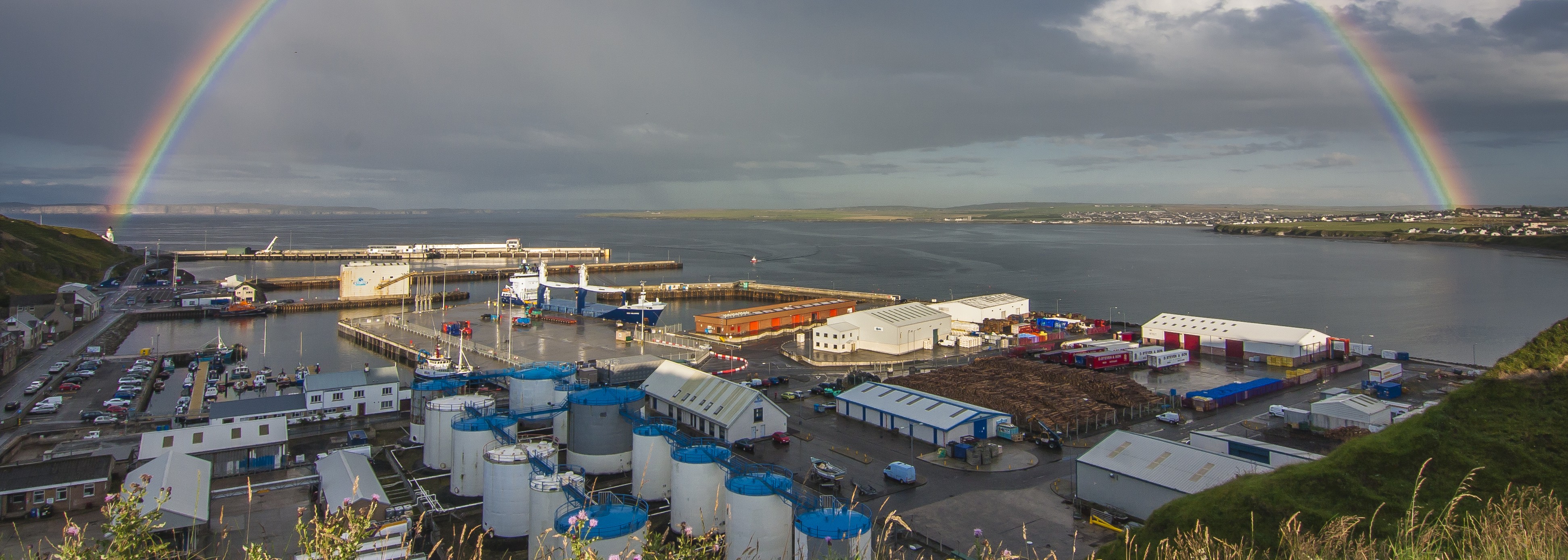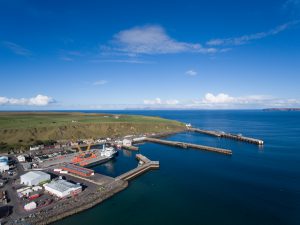A newly released report has highlighted Scrabster Harbour’s positive economic impact on the Caithness and Scottish economy as the Scrabster Harbour Trust looks to a multi-million pound investment programme to expand the harbour’s facilities over the coming years.
The independent Economic Impact Assessment report found the harbour currently generates £25 million gross value added (GVA) in Caithness and supports over 400 jobs. The figures show an increase from 339 jobs to 403 jobs since the last economic assessment in 2009, underlining the growing role of the harbour to the Caithness economy. GVA has also increased from £14.6 million in 2009 to £24.8 million in 2016, a 70% increase. The report found the wages and salaries arising from the activities of the harbour is up from £6.2 million in 2009 to £10.3 million in 2016. The total economic output of the harbour is now measured at £48 million compared to £39 million in 2009.
The report comes as the Scrabster Harbour Trust looks to redevelop the St Ola Quay to create further deep-water harbour infrastructure at an estimated cost of £15 million. The Trust is also exploring options to create additional laydown at the port.
Scrabster Harbour has already benefited from significant investment from the public sector in infrastructure, with over £35 million invested in port infrastructure in the last 25 years. In 2013, the Trust invested £18m into the renovation of the Old Fish Market pier to transform it into the new Jubilee Quay to position the port as an attractive port to the oil and gas and renewables sectors.
The investment aligns with the Caithness and North Sutherland Regeneration Partnership Vision for Caithness and North Sutherland to become a centre for marine renewable energy and a service hub for the oil and gas industry in the West of Shetland area.
Scrabster Harbour is the UK’s fourth largest landing port for fish and has recently finished a new Ice Plant to expand facilities for fishing vessels. The harbour has a growing oil and gas and renewables base, making it a strategic supply base for the sectors. The harbour also welcomes an increasing number of cruise ship visitors and provides lifeline ferry services.
Sandy Mackie, Port Manager at Scrabster commented:
“This report underlines that Scrabster Harbour plays a key role in the Caithness and Scottish economy. It is welcome to see an increase in jobs connected to the harbour and it is important that we continue to invest in our facilities to ensure the best service to the many sectors who rely on Scrabster Harbour.
“We believe Scrabster Harbour and Caithness can continue to be central to Scotland’s fishing, oil & gas and renewables sectors and there are a number of exciting plans for the harbour going forward, such as the redevelopment of one of the quays.
“The report highlights that the economic significance of Scrabster Harbour has increased. This reflects past investment but also the commercial decisions of port users and businesses. We would like to thank all the businesses and organisations who use the harbour’s facilities and who have contributed to the harbour’s growing success. We are proud to serve the North of Scotland and our role in connecting communities and businesses.”
The Economic Impact Assessment of Scrabster Harbour was carried out by Grangeston Economics between January and June 2017. The EIA was funded with support from the Dounreay Site Restoration Limited socio-economic funding.
The report found the total economic impact (2016) (taking into account direct, indirect and induced effects) of Scrabster Harbour on the Caithness economy was as follows:
- Jobs: 403 full time equivalents.
- GVA: £25 million. (Gross Value Added is the additional value created within Caithness as reflected in wages to employees and profits to company owners).
- Output: £48 million.
- Income: £10 million. (Wages and salaries within Caithness generated by economic activities attributable to Scrabster Harbour).
The full report is available from our downloads section of the website




